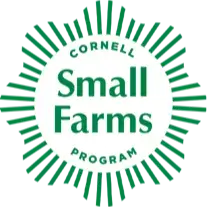Recommended Reading: Week of August 6
Welcome to our second installment of Small Farms’ Recommended Reading! Here you’ll find a variety of articles handpicked each week by the Small Farms team. These include resources, educational articles, and tips — all in one location for a quick browse of news in addition to our bimonthly newsletter.
This week we’re reading about daylilies — an easy perennial to add to our gardens. We’ve also included a guide to transitioning beef cattle to organic production, recent research on the addition of lime to acidic soils, and why Americans are motivated to purchase convenience food. Additionally, we’ve included resource guides for farmers market managers and local producers, and tips for pork producers to share their story via social media.
Easy Way to Add Color to Your Summer Garden
Due to their 24-hour life span, a large bed of daylilies will greet you with fresh flowers each day. Few diseases and pests affect these flowers and the ability to be grown in USDA Hardiness Zones three through nine make the daylily a practical option for gardeners throughout the northeast. Read more.
Beef Farmer? Considering a switch to organic herd practices?
This NOFA-NY fact sheet allows you to take a quick look at the primary factors in organically produced beef and will help you in making an informed decision regarding whether to transition your herd. Read more.
Plant Phosphorus Uptake: More Complicated Than Just Adding Lime
Lime is often added to acidic soils. However, this “bread and butter” solution alone did not prove significant to phosphorus uptake in plants in an experiment conducted in extremely acidic soils in Western Kenya. Researchers are working to determine whether using lime in quantities necessary for significant difference in plant uptake will result in soil health trade-offs. Read more.
Employment and Time Constraints: Why Americans Continue Choosing Convenience Food
Why are Americans continually choosing “convenience food” (restaurant meals and ready-to-eat meals from grocery stores) rather than preparing home cooked meals? USDA economic researchers found that limited resources, such as time and budget constraints, typically lead people to purchase less nutritious, “convenience food.” Read more.
Farmers Market Manager? Consider Partnering with Local Faith Communities
This guide for farmers market managers explains the benefit of partnering with communities which typically focus on aiding the food insecure and those in poverty and offers advice on how to approach the partnership to ensure those that need fresh food the most are able to have access. Additionally, the guide provides step-by-step goal planning, an example of creating and working toward goals featuring SNAP benefits, and ends with several case studies for your review. Read more.
Resource Guide to Bring Local Food to Local Institutions
Special events, on-site farmers markets, and employment CSAs are some of the creative ways to bring local food to work and/or educational institutions. Farmers interested in expanding to this form of localized sales can use this guide and reference case studies to explore the option. Read more.
Go Social with Pork Production
Consumers pay attention to social media — a lot of attention. This article gives five reasons and basic tips, such as to keep it simple and “make it a conversation, not just a list of facts,” to become active on social media with your pork production. Read more.

